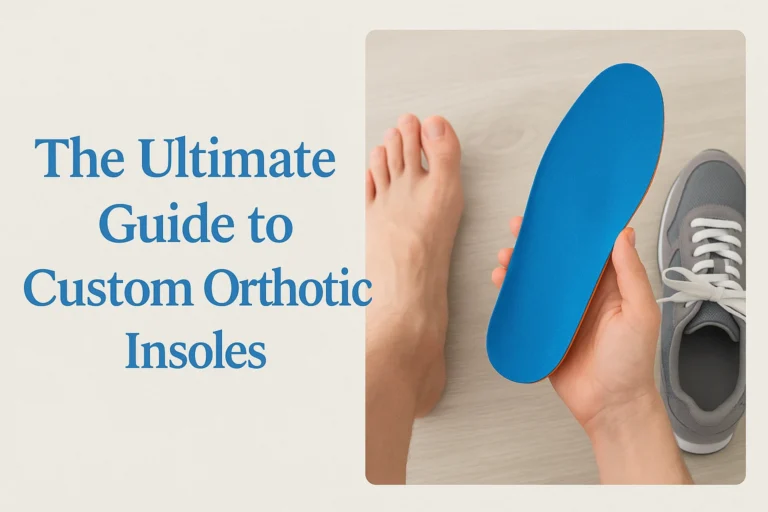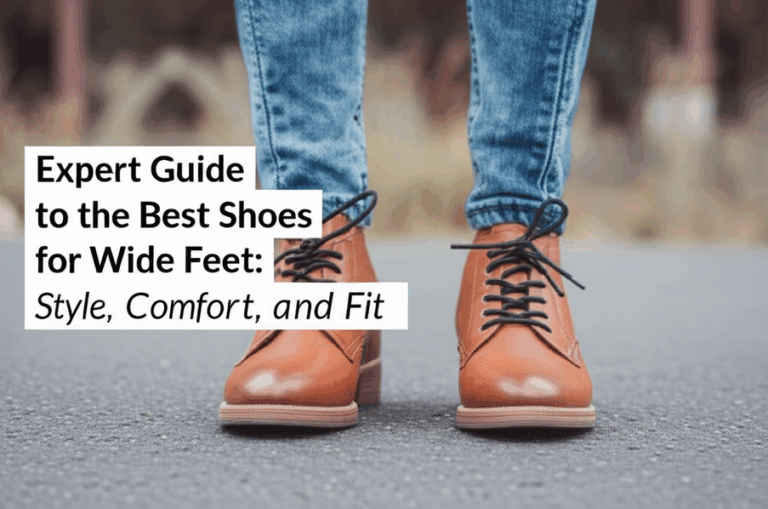Complete Guide to Hospital Shoes for Healthcare Workers: Comfort, Safety, and Style

Hospital shoes for healthcare workers serve as the foundation for comfort, safety, and style during long, demanding shifts. As healthcare professionals spend countless hours on their feet, choosing the right footwear isn’t just a matter of preference but a necessity that influences both well-being and performance. In 2025, with evolving hospital standards and footwear technology, understanding what makes the ideal hospital shoe can transform a nurse’s or doctor’s daily experience. This guide will walk you through essential features, trending styles, and practical advice to find the best nursing shoes and orthopedic shoes for healthcare workers that balance comfort and style effortlessly.
Why Hospital Shoes Are Essential for Healthcare Workers
Importance of Footwear in Healthcare Settings
The role of hospital shoes for healthcare workers is crucial in providing the physical support needed throughout exhaustive shifts. Quality footwear helps prevent fatigue, reduces injury risks, and supports posture, leading to enhanced focus and efficiency.
- Proper shoes reduce slips and falls, common in wet or busy hospital floors.
- Supportive footwear improves blood circulation, minimizing swelling and discomfort.
- Footwear designed for healthcare settings can guard against contaminants, an essential health safety measure.
Common Challenges Faced by Healthcare Workers on Their Feet
Healthcare workers frequently face foot pain, tired muscles, and heel strain due to extended standing and walking.
- Prolonged shifts cause swelling and foot sensitivity.
- Rapid changes in hospital floor surfaces require slip-resistant footwear.
- Inadequate shoes can worsen conditions like plantar fasciitis or varicose veins.

Key Features to Look for in Hospital Shoes for Healthcare Workers
Slip-Resistance and Safety
Slip-resistant footwear is non-negotiable to prevent accidents in wet or slick areas.
- Look for soles made of rubber or polyurethane for maximum grip.
- Tread patterns should channel liquids away from the shoe’s base.
- Confirm certification standards for slip resistance.
Comfort and Cushioning
Comfortable shoes for nurses and doctors ease the stress their feet endure.
- Memory foam insoles or gel pads absorb shock.
- Padding around the heel and tongue prevents chafing and bruising.
- Removable insoles allow customization with orthotics.
Arch Support and Foot Health
Proper arch support can help reduce fatigue and long-term damage.
- Shoes with built-in arch molds support the natural foot curve.
- Orthopedic shoes for healthcare workers often feature enhanced arch and heel cups.
- Consider options for flat feet or high arches.
Durability and Material Quality
Healthcare shoes face constant wear and exposure to fluids.
- High-quality leather or synthetic uppers resist stains and tears.
- Sealed seams and waterproof materials enhance longevity.
- Lightweight yet sturdy materials reduce foot strain.
Breathability and Hygiene
Breathable shoes prevent moisture build-up, reducing odors and infections.
- Mesh uppers or perforations ensure airflow.
- Anti-microbial linings maintain hygiene.
- Quick-dry fabrics are ideal for fast cleaning.

Popular Types of Hospital Shoes for Healthcare Workers
Clogs: Classic and Reliable
Clogs remain a favorite for their ease and support.
- Wide toe boxes reduce toe pressure.
- Slip-resistant outsoles enhance safety.
- Common for their breathable designs and easy cleaning.
Slip-On Sneakers and Mules
For those who prefer athletic comfort with professional looks.
- Lightweight and flexible materials for dynamic movement.
- Padded collars and insoles for added comfort.
- Stylish enough to blend with uniforms.
Waterproof and Easy-to-Clean Options
Ideal for environments dealing with fluids and spills.
- Waterproof uppers made from polyurethane or treated leather.
- Quick wipe-clean surfaces save time.
- Resistant to harsh cleaning agents.
Orthopedic and Specialized Footwear
Designed for foot health and specific medical needs.
- Targeted cushioning for plantar fasciitis, bunions, or heel spurs.
- Extra wide options and adjustable straps.
- Often include removable insoles for custom orthotics.
[Various hospital shoes: clogs, slip-on sneakers and orthopedic footwear]
Styling and Outfit Tips for Healthcare Workers
Choosing Colors and Styles to Match Uniforms
Coordinating hospital shoes with uniforms boosts professional appearance.
- Neutral colors like white, black, and navy work with most scrubs.
- Introduce subtle color pops like pastel blues or greens for style.
- Some brands offer customizable accents or interchangeable details.
Balancing Functionality with Personal Style
You can look good without sacrificing comfort or safety.
- Choose sleek, minimal designs with supportive structure.
- Platform soles are trending for extra cushioning while maintaining style.
- Reflective trims add safety for night shifts.
Best Socks and Accessories for Hospital Shoes
Socks complement footwear performance and comfort.
- Moisture-wicking and bamboo fiber socks keep feet dry.
- Compression socks improve circulation and reduce swelling.
- Avoid thick seams to prevent pressure points.
| Occasion | Outfit Idea | Shoe Type |
|---|---|---|
| Work Shift | Classic scrubs, neutral slip-resistant clogs | Clogs |
| Casual Break | Comfortable scrub pants, slip-on sneakers with socks | Slip-On Sneakers |
| Formal Training | Tailored scrub jacket, polished orthopedic mules | Orthopedic Footwear |
Seasonal Considerations for Hospital Shoes
Warmth and Protection in Colder Months
Cold seasons demand insulation without compromising breathability.
- Shoes with thermal linings keep feet warm.
- Waterproof options guard against snow and slush.
- Pair with thermal socks for extra heat.
Breathable Options for Hotter Seasons
Summer and high-temperature environments require ventilated shoes.
- Uppers with mesh panels improve airflow.
- Light-colored shoes reflect heat.
- Anti-microbial treatment reduces odor.
Adapting Footwear for Different Hospital Areas
Some departments have specific footwear needs.
- ICU or surgery rooms often require sterile, easily sanitized shoes.
- Pediatrics may welcome colorful, fun shoe styles.
- Behavioral health units prioritize secure, slip-resistant soles.

How to Choose the Right Fit and Size
Measuring Your Feet Accurately
Correct measurement ensures comfort and prevents injury.
- Measure feet at the end of the day when swelling peaks.
- Use a Brannock device or printable sizing charts.
- Measure width as well as length.
Trying Shoes with the Right Socks
Always wear the type of socks you intend to use during shifts.
- Ensure enough space for compression or cushioned socks.
- Walk and stand briefly in the shoes to test fit.
Adjusting for Swelling During Long Shifts
Feet often swell after hours on duty.
- Select shoes with adjustable fit features like straps or laces.
- Avoid overly tight shoes, which restrict circulation.
- Consider half a size larger for comfort.
Maintaining and Caring for Your Hospital Shoes
Cleaning Techniques for Different Materials
Proper care extends shoe life and maintains hygiene.
- Leather shoes: wipe with damp cloth and condition regularly.
- Mesh and fabric: gentle hand wash and air dry.
- Clogs: wipe with disinfectant after each use.
When to Replace Your Shoes
Timely replacement preserves support and safety.
- Look for worn soles or decreased cushioning.
- Replace every 6-12 months depending on use.
Extending the Lifespan with Proper Care
Routine maintenance keeps shoes safe and comfortable.
- Rotate between two pairs to allow drying.
- Store shoes in dry, ventilated spaces.
- Use shoe trees or inserts for shape retention.
Frequently Asked Questions About Hospital Shoes for Healthcare Workers
Are hospital shoes required in all healthcare facilities?
Not universally mandated, but strongly recommended for safety and hygiene in most hospitals.
Can hospital shoes help prevent foot and back pain?
Yes, proper footwear alleviates pressure and supports posture reducing pain.
What makes a shoe slip-resistant?
Special sole materials and tread designs that channel liquids and maximize grip.
Are there hospital shoes suitable for wide feet?
Yes, many orthopedic and nursing shoes come in wide widths.
Can I wear athletic shoes as hospital shoes?
Athletic shoes can be suitable if they meet safety and slip-resistance standards.
Summary and Practical Tips for Choosing Hospital Shoes for Healthcare Workers
Choosing the right hospital shoes for healthcare workers is essential for maintaining comfort, ensuring safety, and expressing personal style within professional settings. Focus on features like slip-resistant footwear, excellent cushioning, and proper arch support. Whether you prefer classic clogs, orthopedic shoes for healthcare workers, or trendy slip-on sneakers, make sure to match colors and styles with your uniform while considering seasonal needs. Remember to prioritize proper fit and shoe care to extend durability. Embrace comfort and confidence in your hospital shoes to power through the busiest shifts with style.
“Invest in your feet, and your steps will carry you through the toughest shifts with ease and style.”
For more insights into healthcare fashion, explore our detailed guide on professional attire for nurses and tips on achieving comfort during long shifts.









